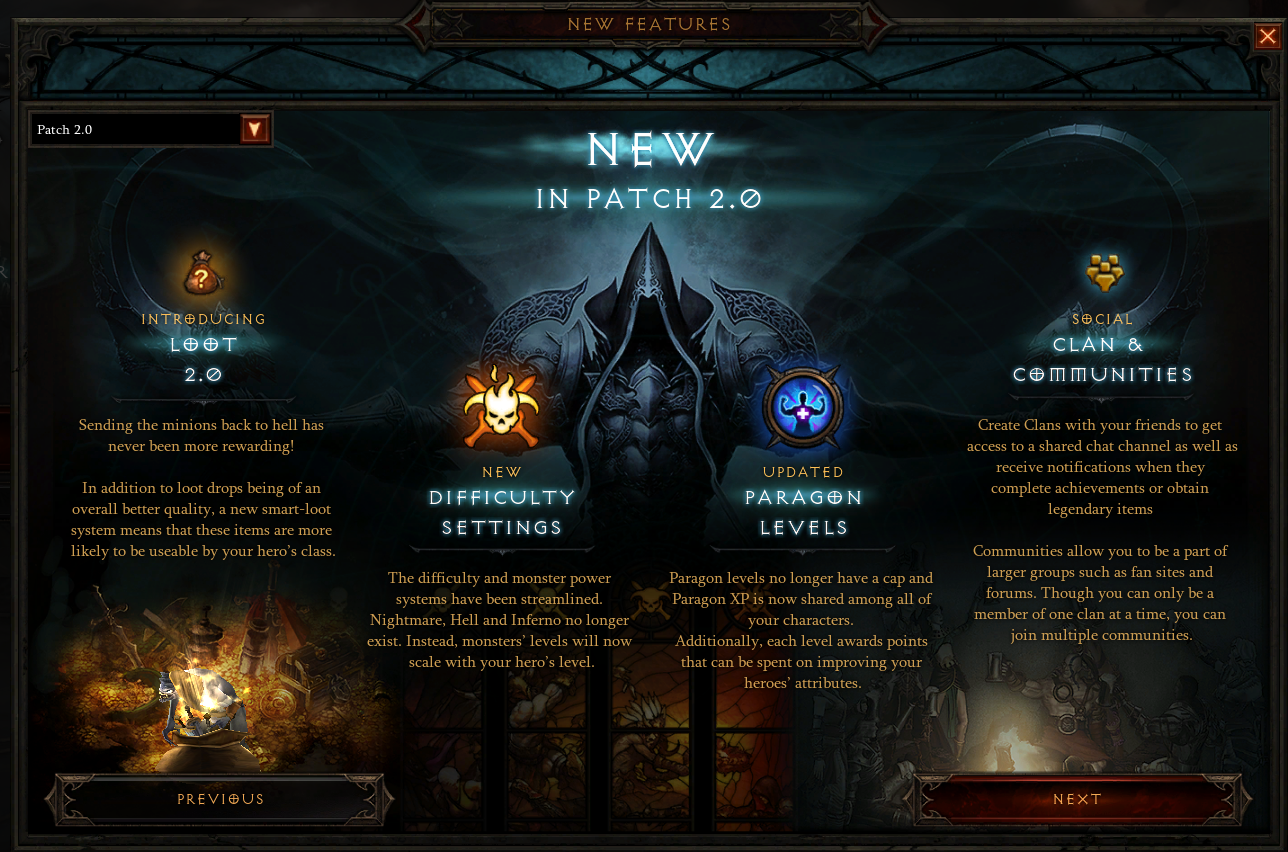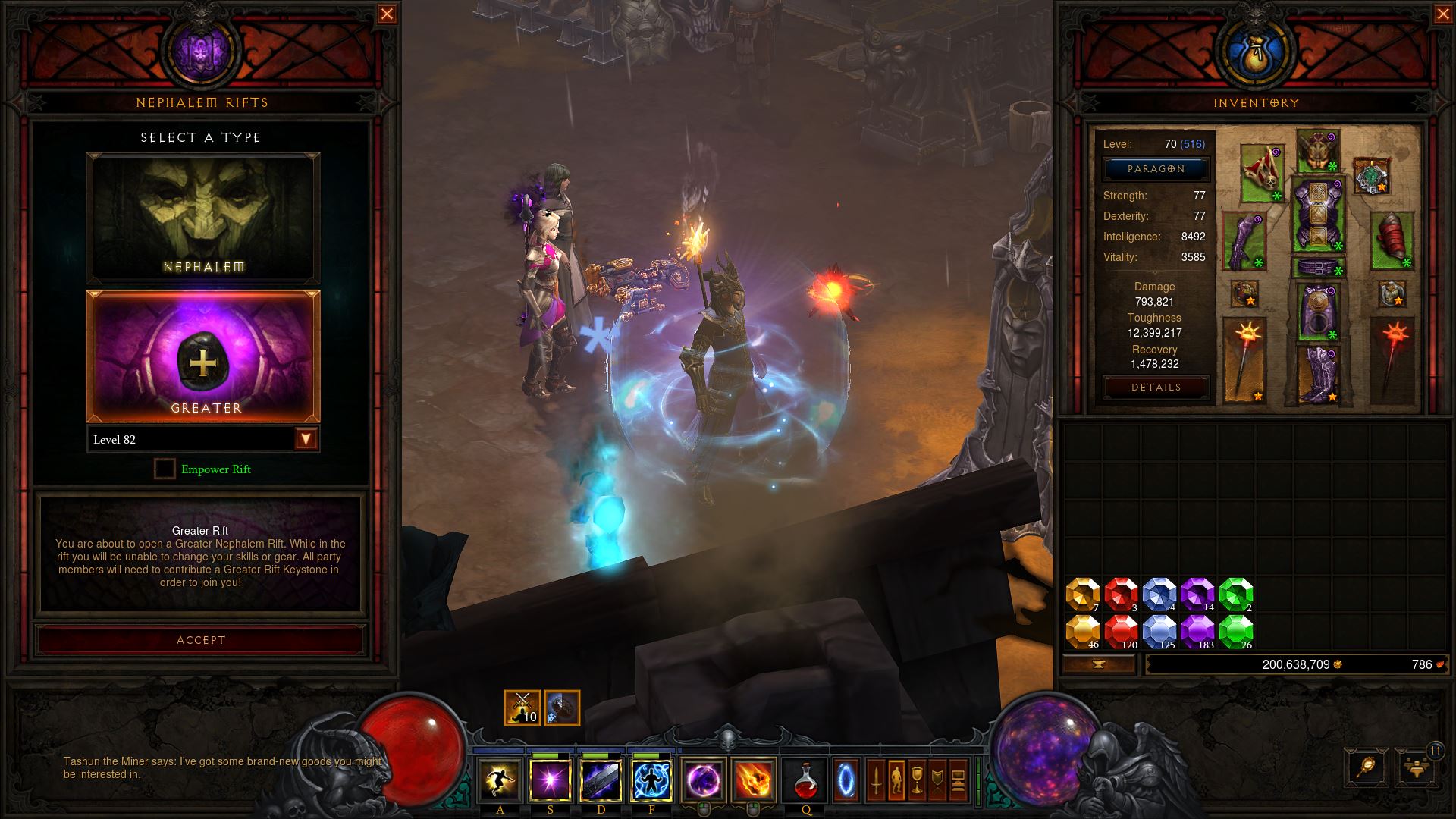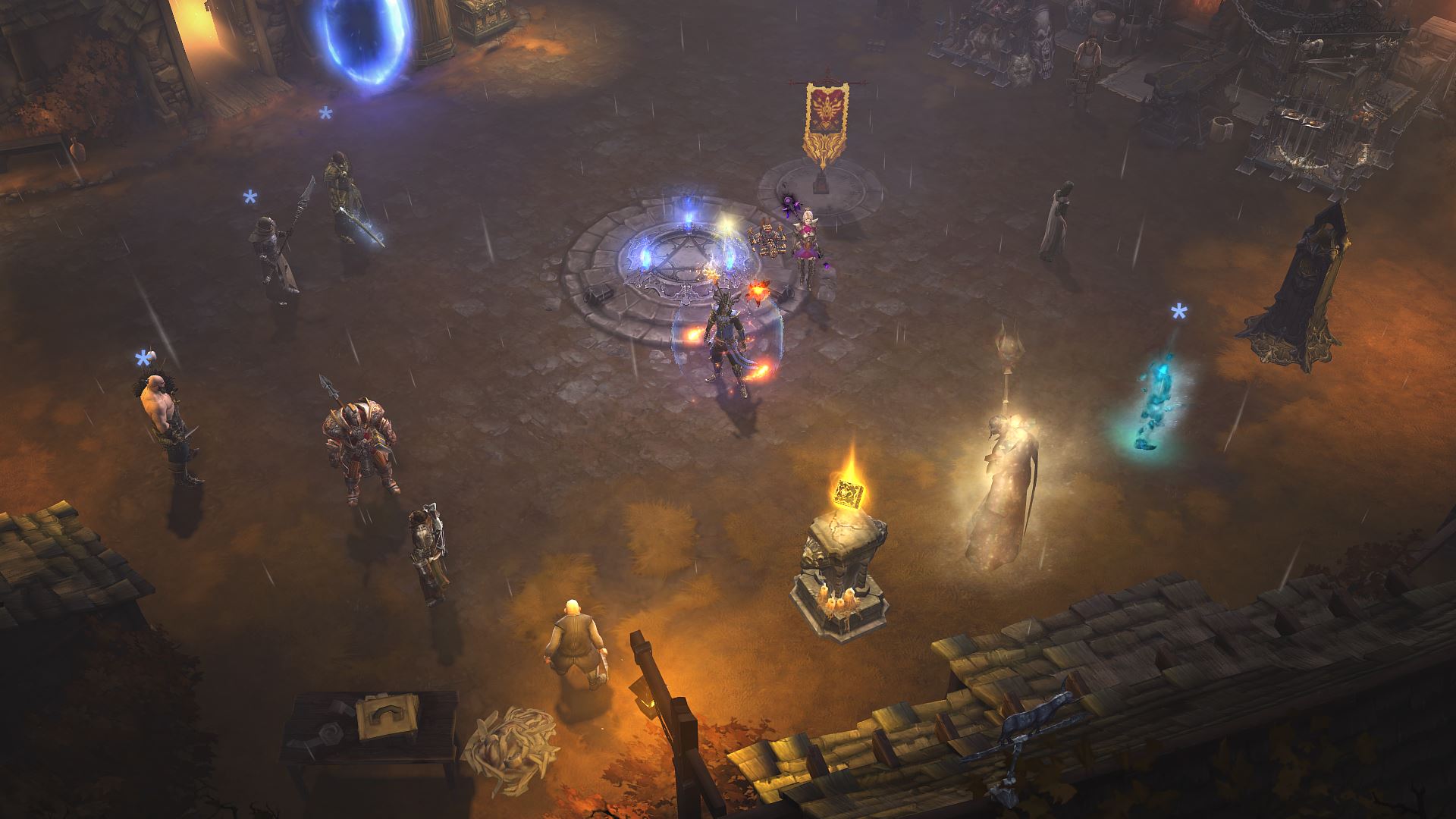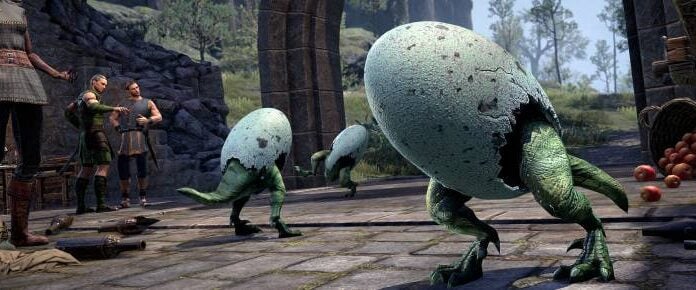
In the first part of this Why I Play retrospective on Diablo III, I discussed the early issues that accompanied the game’s record-setting debut. And while that rocky period is likely something many gamers remember well, it was certainly not the end of the story. In the second and final chunk of this series, we’ll look into how Blizzard salvaged the game – and what’s on deck with Diablo IV.
Repairing the rifts
Fortunately for all of us, Blizzard didn’t give up on the game after its chaotic launch: At Gamescom 2013, the studio revealed the Reaper of Souls expansion. Slowly but surely, the devs started revealing the fun additions to the game, including nephalem rifts and adventure mode (more on these later). The big irony here is that it wasn’t what was being added that many players were excited about but what was being removed. And it was – you guessed it – the auction house.
In a blog post, Blizzard told players that it believed it had been wrong about the auction house, agreeing with those gamers who maintained that it “undermined” the core loop of killing monsters for gear. The studio announced that it would be closing the RMAH in March of 2014, about a week before the expansion was to release with patch 2.0.

In order to facilitate this transition, the studio had to make many key changes, specifically with the loot system and itemization in a system dubbed Loot 2.0, which simply meant items that monsters dropped would be relevant to the class they dropped for. Players would still get items not meant for their class, but a majority of the items would actually be usable. The removal of the auction house meant the studio was restricting trading on a broad scale; players could trade with others only if they were in the same party at the time the item dropped and within the same game. Legendary items were given special build-defining powers as well. And then, to address the powercreep, Blizzard removed inferno mode and replaced it with the torment levels; the new difficulties scaled with the player’s level in that the higher the difficulty, the better the loot.
The expansion and patch also addressed a major request from the community: some form of endless content. The most popular request was for an endless dungeon. Blizzard compromised on the request with two major additions: adventure mode and the rift system.

In adventure mode, players had all the waypoints unlocked and could go anywhere. Each act had five bounties, which were essentially quests, and completing all the bounties in the act rewarded players with a box of loot.
The nephalem rifts system was essentially randomly generated dungeons. Every floor featured a different tileset, and the monsters would be random. In order to complete the dungeon, players had to kill champion packs that dropped progression orbs. Collecting those filled a bar that when filled summoned a boss. Upon killing said boss, players were rewarded with loot and a greater rift key that led to the main endgame progression: the Greater Rift.
The Greater Rift was basically a time trial. Players were tasked with completing the dungeon within roughly 15 minutes; successful completion within the timeframe allowed the player to advance to a more difficult greater rift.
In its early iterations, there were unlimited levels to the rift. But today, it’s been simplified to 150 levels of difficulty. Builds that could complete the a greater rift 150 were considered the meta builds of the game. (If this sounds a whole lot like World of Warcraft’s mythic dungeons, you’re right. The greater rifts were a direct inspiration for mythic dungeons.) The idea was that this content offered fast gameplay and progress that could be completed whether players had only a few minutes or many hours.
Blizzard found a solid answer to its endgame woes with the nephalem rifts. One of the main reasons the studio had been hesitant about endless dungeons was that they thought it would bore players. Diablo III obviously didn’t invent the idea, as many contemporaries in the ARPG and MMO space had systems like this, but for Diablo III specifically, it was the perfect way to introduce theoretically endless play. It also had something many other games didn’t: the Blizzard polish. Every hit was impactful, the sound was on point, and animations were good. There were so many ways to kill a monster; they could blow up into gibs, frozen and shattered, incinerated, the list goes on. And it was all satisfying to do.
Ultimately, these changes helped the game carry on this long into the present day. I haven’t even mentioned much about the game’s seasons, but over the last few years they’re what brought me back.

The quiet years
Diablo III will always carry the scars of its legacy. For some gamers, it failed to carry the mantle of a Diablo game. But after the 2.0 patch and its subsequent updates, Diablo III is one of the most complete AAA titles from the 2010s era of gaming. It aged very well. And even though people will passionately discount this game, at least it’s not the only Diablo game available.
When it first released, there was a lot of fear that the age of Diablo II was over and that players would see more and more games weakened by what they perceived as stripped-down forms of a perfect formula. But since both games are easily accessible on modern computers now, I think a lot of those fears have been quelled and people are more accepting of each entry in the franchise for what it is.
And looking forward, I’m happy with how Diablo III turned out. It’s my favorite in the series, actually. I’m happy that it’s different from Diablo II, and I’m glad we’re not seeing a carbon copy of it in Diablo IV. And as we enter yet another new era in the franchise, I’m sure it’ll just keep chugging on. We’ll still get new seasons and very few changes. But at this point, that’s the last thing we’ll need.
Honestly, the only thing this game needs at this point is an offline mode – if only for the sake of game preservation.
 There’s an MMO born every day, and every game is someone’s favorite. Why I Play is the column in which the Massively OP staff members kick back and reminisce about all their favorite MMOs. Whether it’s the new hotness or an old fan favorite loaded with nostalgia, each title we cover here tugs at our heartstrings and keeps us coming back for more.
There’s an MMO born every day, and every game is someone’s favorite. Why I Play is the column in which the Massively OP staff members kick back and reminisce about all their favorite MMOs. Whether it’s the new hotness or an old fan favorite loaded with nostalgia, each title we cover here tugs at our heartstrings and keeps us coming back for more.



















